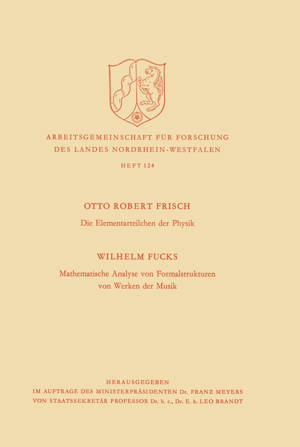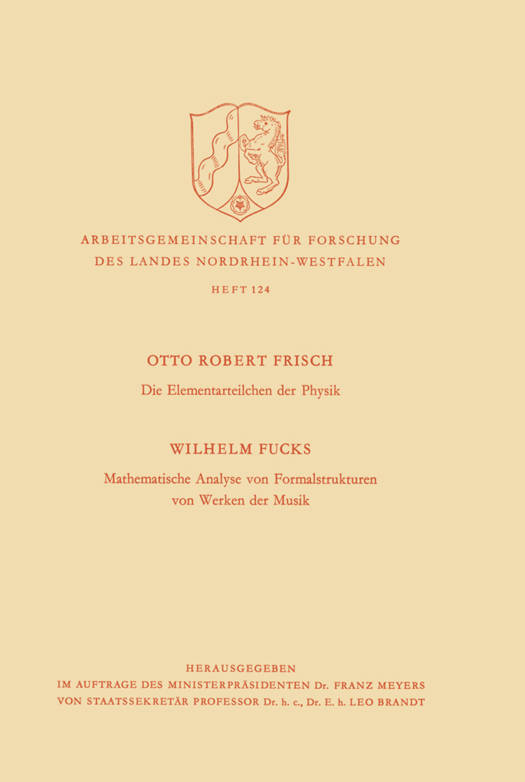
- Afhalen na 1 uur in een winkel met voorraad
- Gratis thuislevering in België vanaf € 30
- Ruim aanbod met 7 miljoen producten
- Afhalen na 1 uur in een winkel met voorraad
- Gratis thuislevering in België vanaf € 30
- Ruim aanbod met 7 miljoen producten
Zoeken
Die Elementarteilchen Der Physik / Mathematische Analyse Von Formalstrukturen Von Werken Der Musik
Otto Robert Frisch
€ 54,45
+ 108 punten
Omschrijving
The elementary building bricks of matter have long been known: the elec- tron (1897), the proton (1911) and the neutron (1932); in addition, there was the quantum of radiation, the photon (1905), known to have a double nature with both wave and particle features. The bold idea (L. de Broglie, 1924) that streams of ordinary particles such as electrons should possess a similar double nature led to the development of wave mechanics; moreover, diffraction phenomena were found with beams of electrons, atoms and even molecules. Pauli's Exclusion Principle causes us to distinguish between fermions which obey the Exclusion Principle ("no two equal particles in the same quantum state"), and bosons which do not. Another distinction is that all fermions possess a spin of h/4n, which is indestructible because in quantum theory the spin of a system can change only by whole multiples of h/2n. In 1928 Dirac showed that the spin is a consequence of describing the electron by the simplest linear wave equation that is relativistically invar- iant. A further consequence of his theory was the existence of positive elec- trons, which were indeed soon observed. After that it was expected that to any fermion there should exist an anti-particle, and this has been fully con- firmed in recent years.
Specificaties
Betrokkenen
- Auteur(s):
- Uitgeverij:
Inhoud
- Aantal bladzijden:
- 125
- Taal:
- Duits
- Reeks:
- Reeksnummer:
- nr. 124
Eigenschappen
- Productcode (EAN):
- 9783322982285
- Verschijningsdatum:
- 1/01/1963
- Uitvoering:
- Paperback
- Formaat:
- Trade paperback (VS)
- Afmetingen:
- 170 mm x 244 mm
- Gewicht:
- 226 g

Alleen bij Standaard Boekhandel
+ 108 punten op je klantenkaart van Standaard Boekhandel
Beoordelingen
We publiceren alleen reviews die voldoen aan de voorwaarden voor reviews. Bekijk onze voorwaarden voor reviews.











